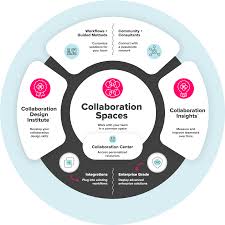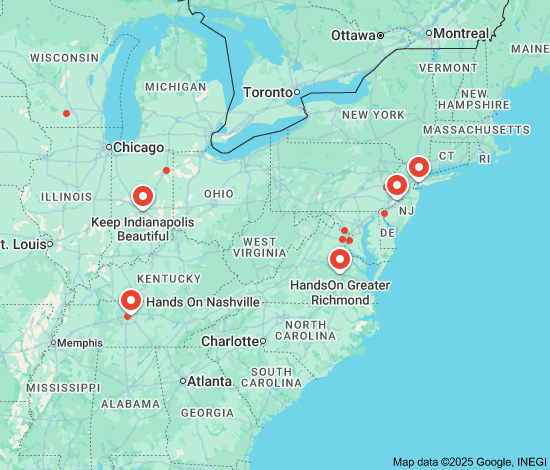The Role of Media in Society
Media plays a crucial role in shaping public opinion, disseminating information, and influencing societal norms. From traditional forms like newspapers and television to modern digital platforms, media has the power to reach millions of people and shape their perceptions.
One of the key functions of media is to act as a watchdog, holding those in power accountable and uncovering corruption or wrongdoing. Investigative journalism plays a vital role in keeping societies informed and ensuring transparency in governance.
Media also serves as a platform for diverse voices to be heard. Through news coverage, opinion pieces, and social media, individuals can express their views and engage in public discourse. This diversity of perspectives is essential for a healthy democracy.
Entertainment media, such as movies, music, and television shows, also play a significant role in shaping culture and influencing behavior. They can reflect societal values or challenge them, sparking conversations about important issues.
With the rise of digital media, information is now more accessible than ever before. Social media platforms allow for instant communication and the rapid spread of news. However, this also poses challenges such as misinformation and the spread of fake news.
In conclusion, media is a powerful force that shapes society in various ways. It has the ability to inform, educate, entertain, and mobilize people towards positive change. As consumers of media content, it is important to critically evaluate information sources and be mindful of the impact that media can have on our perceptions and beliefs.
Understanding Media: Common Questions and Answers About Types and Definitions
- What are examples of media?
- What are the 5 types of media?
- How do you define a media?
- What are the 3 types of media?
- What are the 7 types of media?
- What are the four 4 types of media?
- What are the three main types of media?
- What is considered to be a media?
What are examples of media?
Media encompasses a wide range of communication channels and platforms that serve to inform, entertain, and engage audiences. Examples of media include traditional forms such as newspapers, magazines, television, radio, and film. In the digital age, media also includes online platforms like websites, social media networks, podcasts, streaming services, and mobile applications. These diverse mediums play a vital role in shaping public discourse, disseminating information, and connecting people across the globe. Whether through news reporting, documentaries, music videos, or social networking sites, media influences how we perceive the world around us and shapes our cultural landscape.
What are the 5 types of media?
In the realm of communication and information dissemination, there are five main types of media: print media, broadcast media, digital media, social media, and outdoor media. Print media includes newspapers, magazines, and books that are published in physical form. Broadcast media encompasses television and radio broadcasts that reach a wide audience through airwaves. Digital media refers to online platforms such as websites, blogs, and online news outlets. Social media platforms like Facebook, Twitter, and Instagram enable users to create and share content with a global audience. Outdoor media involves advertising displays in public spaces like billboards, bus stops, and transit vehicles to reach consumers on the go. Each type of media plays a unique role in shaping public discourse and influencing societal trends.
How do you define a media?
Media refers to the various channels and platforms used to communicate information, news, entertainment, and other content to a wide audience. It encompasses traditional forms such as newspapers, television, radio, and magazines, as well as modern digital mediums like social media, websites, podcasts, and streaming services. Media plays a critical role in shaping public opinion, influencing societal norms, and facilitating communication on a global scale. It serves as a powerful tool for disseminating information, fostering public discourse, and connecting individuals across different communities. The definition of media continues to evolve with technological advancements and changes in communication practices, highlighting its dynamic nature in today’s interconnected world.
What are the 3 types of media?
In the realm of communication and information dissemination, the three primary types of media are print media, broadcast media, and digital media. Print media includes newspapers, magazines, and printed materials that provide news and information in a tangible format. Broadcast media encompasses television and radio platforms that deliver content through audio and visual channels to a wide audience. Digital media refers to online platforms, social media networks, websites, and streaming services that distribute information digitally through the internet. Each type of media serves a unique purpose in reaching audiences and shaping public discourse in today’s interconnected world.
What are the 7 types of media?
There are seven main types of media that play distinct roles in communication and information dissemination: print media, broadcast media, outdoor media, digital media, social media, interactive media, and news media. Print media includes newspapers, magazines, and books that deliver information in a physical format. Broadcast media encompasses television and radio broadcasting that reaches a wide audience through audiovisual content. Outdoor media refers to advertising displayed outdoors, such as billboards and signage. Digital media involves content distributed electronically, including websites and online articles. Social media platforms allow users to interact and share content online. Interactive media engages users through multimedia experiences. News media focuses on reporting current events and informing the public through journalism practices across various platforms. Each type of media serves unique purposes in shaping public discourse and influencing societal perspectives.
What are the four 4 types of media?
In the realm of communication and information dissemination, there are four primary types of media: print media, broadcast media, digital media, and social media. Print media includes newspapers, magazines, and printed materials that deliver news and information in a tangible format. Broadcast media encompasses television and radio platforms that reach mass audiences through audiovisual content. Digital media refers to online platforms, websites, and streaming services that deliver content digitally. Social media platforms like Facebook, Twitter, and Instagram facilitate interactive communication and user-generated content sharing on a global scale. Each type of media plays a unique role in shaping public discourse and influencing society’s perceptions and behaviors.
What are the three main types of media?
The three main types of media are print media, broadcast media, and digital media. Print media includes newspapers, magazines, books, and other printed materials that deliver information in a physical format. Broadcast media encompasses television and radio, which transmit audio and visual content to a wide audience. Digital media refers to online platforms, social media, websites, blogs, and streaming services that distribute content electronically over the internet. Each type of media plays a distinct role in how information is disseminated and consumed in today’s interconnected world.
What is considered to be a media?
Media encompasses various forms of communication used to convey information, entertainment, and ideas to a wide audience. Traditional media includes newspapers, magazines, radio, television, and films. In the digital age, new forms of media have emerged, such as websites, social media platforms, podcasts, and streaming services. Essentially, any medium that facilitates the dissemination of content to a mass audience can be considered as media. Whether through print, broadcast, or online channels, media plays a vital role in shaping public discourse and influencing societal trends.




Leave a Reply